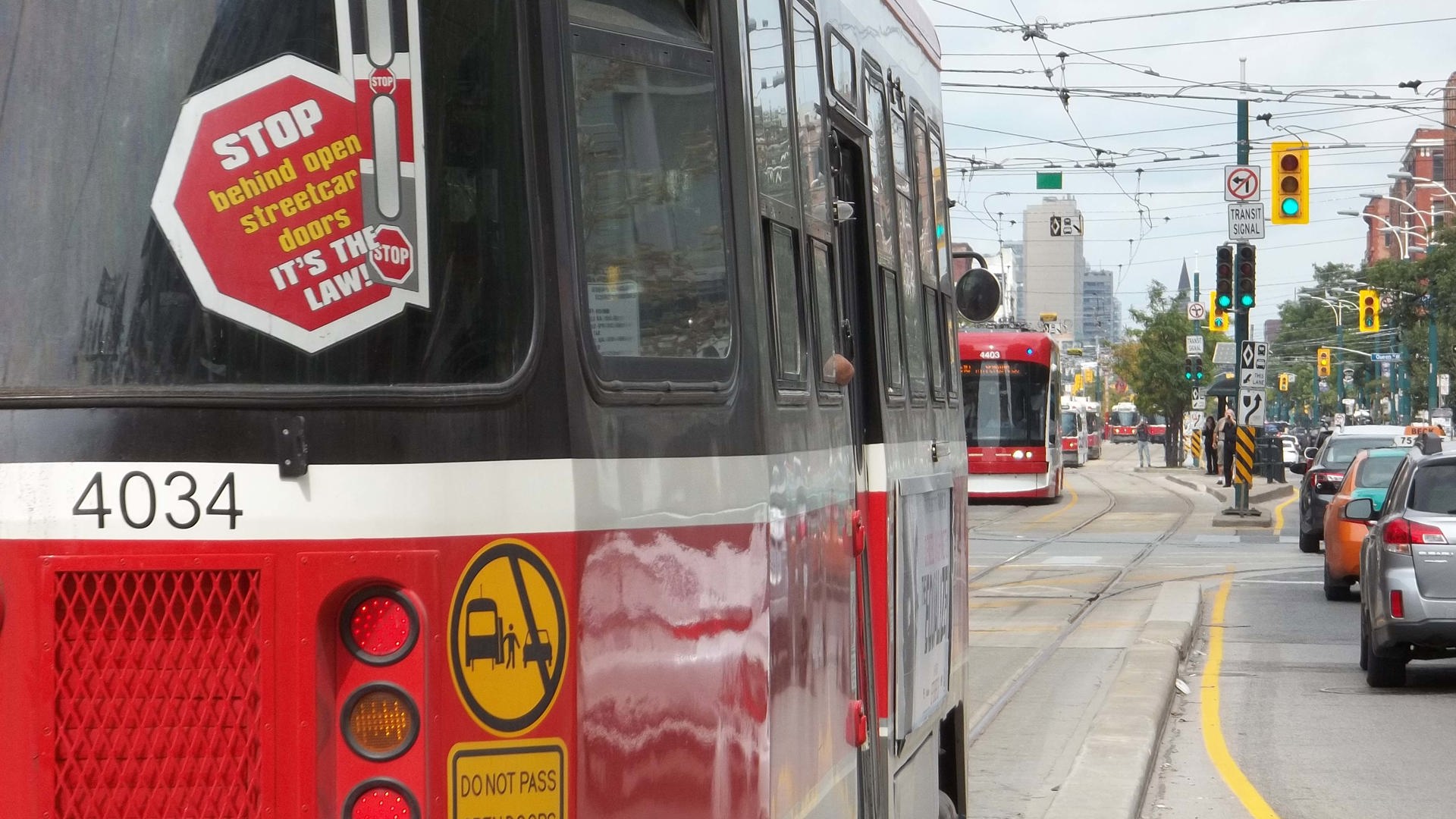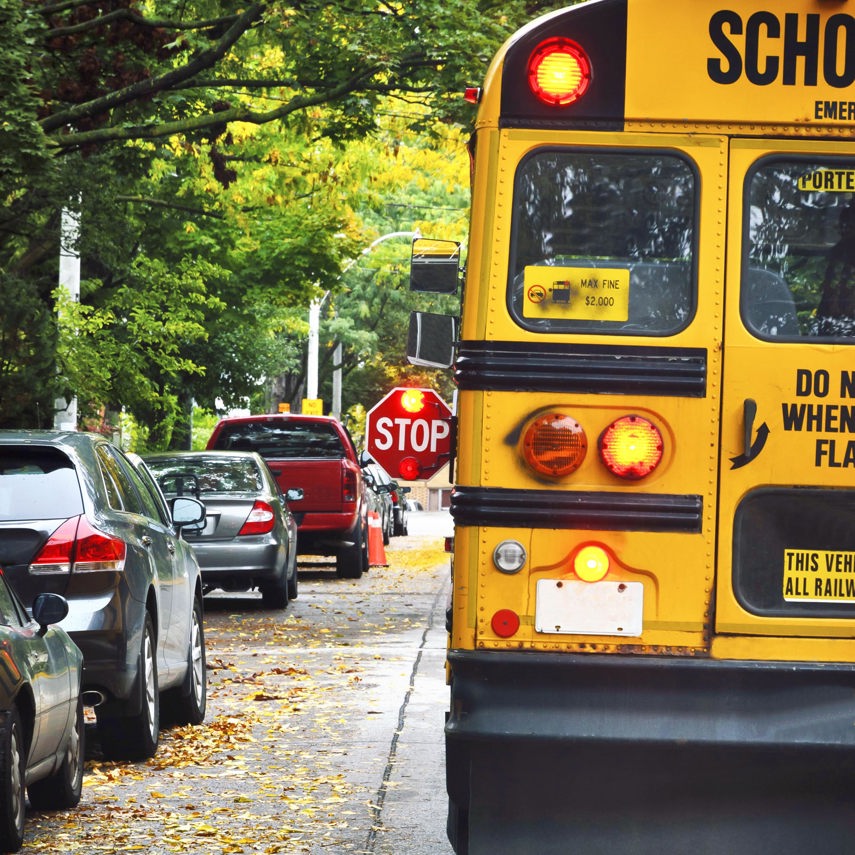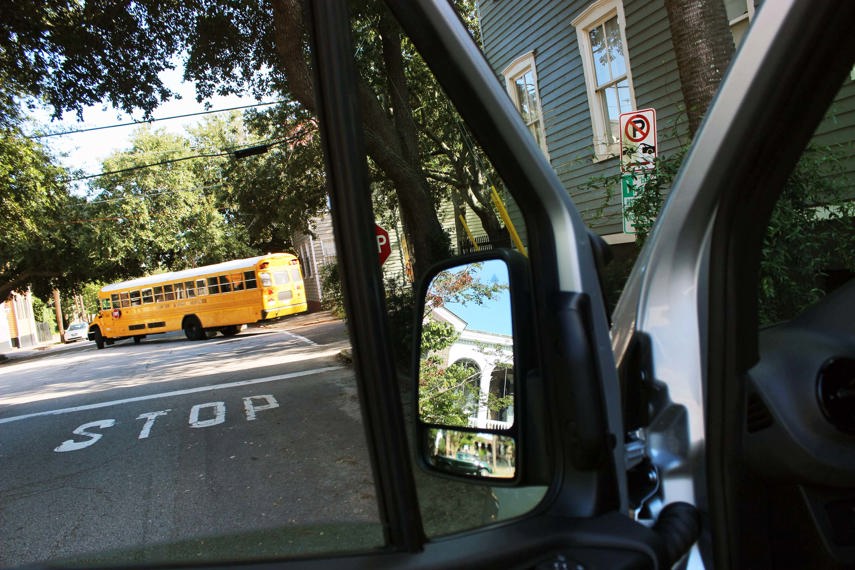Many of us have tales to tell of the horribly unsafe things we’ve seen other drivers do out on the roads. But here’s a truly special one that sets a distressingly low bar for selfishness and pure ignorance.
I’m driving along Lakeshore Boulevard in the west end of Toronto. Here, the road consistently has two lanes: a left lane of standard width that houses streetcar tracks, and a right lane that’s a little more than two cars wide to allow for curbside parallel parking.
I prepare to make a right turn onto Kipling Avenue. There’s no dedicated right-turn lane here, just the extra-wide right lane. So, when a TTC streetcar stops in the left lane just ahead of me, I stay in the centre of the right lane and stop well back of the opening doors so that the passengers can disembark safely.
Then, to my complete shock and horror, just as people are beginning to step out onto the roadway, not one but two – two! – cars squeeze past me on my right side and proceed to make right turns at the corner, happily ignoring the blaring horn of the streetcar and the fact that they’ve put the well-being of around six others at blatant risk.
These absolute troglodytes have failed to comprehend several very important things about what their selfishness could have cost.
For one – and this is the penalty more likely to matter in the minds of those so selfish – their indiscretions could have hit them in the pocketbooks. Across Canada, fines relating to improperly passing transit vehicles are managed at the provincial level, though this specific lane-crossing streetcar scenario is specific to Toronto. Under Ontario’s Highway Traffic Act, the fine is $85 for passing an open streetcar door, which goes up to $150 within a community safety zone. If you do stop but you don’t leave at least two metres between your car and the open door, the same fines apply. Truly, it probably should be a lot higher.
Add to that the fact that transit users can sometimes be among society’s most vulnerable populations – the elderly, the young, or people who are temporarily or permanently disabled and therefore unable to drive – and the 20 seconds of time you might save by barrelling past simply isn’t worth the potential consequences to someone who may have a far more difficult time with recovering.
“In the last three years (2016–2018), we’ve had at least 31 incidents where someone has been injured by a passing car while boarding or exiting a streetcar: 25 while exiting, six while boarding,” Stuart Green, Senior Communications Specialist for the Toronto Transit Commission (TTC), tells autoTRADER.ca. “There are many, many more close calls, but we don’t have a record of those as there are multiple occurrences a day on every route.
“Obviously, any injuries are of concern to the TTC. Our drivers are trained to watch for passing motorists and will alert drivers with their horn or gong if they see someone breaking the law. We have decals on the back of streetcars reminding motorists to stop behind the open doors and have launched awareness campaigns. Unfortunately, some drivers still ignore the warnings and our customers get struck.”
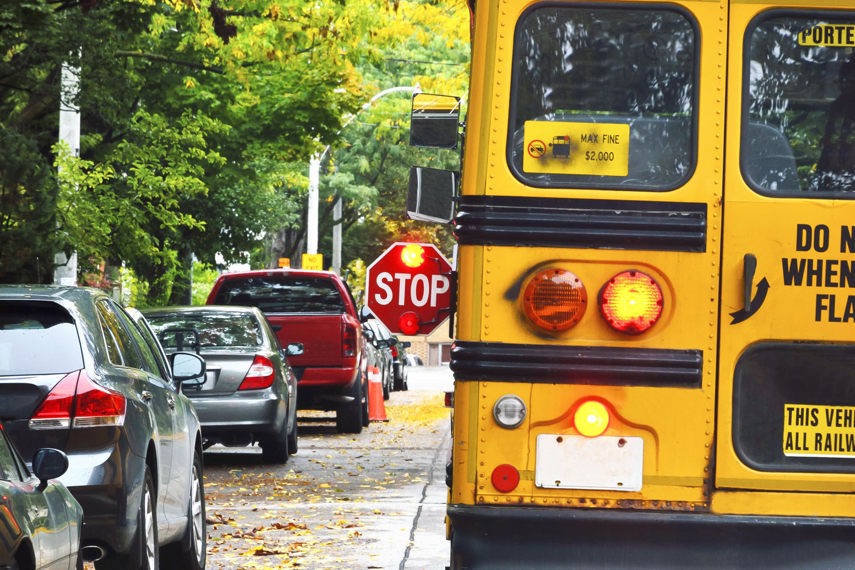
A more common transit-related scenario across the country that also affects a vulnerable population: blowing past stopped school buses.
In Ontario alone, approximately 830,000 children are transported on 20,000 school buses on any given school day. Getting those kids home safely every afternoon presents one single point of greatest risk: preventing them from being hit by vehicles that fail to stop when approaching a signalling bus – by law, drivers are required to stop, no matter which direction they’re travelling. A recent pilot project testing the viability of stop-arm cameras in enforcing penalties showed some Ontario municipalities registering as many as two to three blow-bys per day, per bus.
“The act of passing a stopped school bus is one of the most significant safety concerns in the student transportation industry,” says Alex Bugeya, Safety and Legislation Consultant for the Ontario School Bus Association. “Students are about 80 times more likely to get to school safely on a school bus than in a car. That being said, the greatest risk posed to school bus occupants is not inside the bus. It’s outside the bus, when those students are exposed to traffic through loading and unloading.
“The function of a school bus is not a surprise to the general motoring public. Drivers should be aware and ready to expect that a school bus is going to stop. When they do so, they’re going to activate their overhead warning lights and their stop arm to indicate that they’re going to be, obviously, loading and unloading children.
“Even though bus drivers are trained, and students are trained, to make sure that the students don’t get on or off the bus unless it’s safe to do so, children can be impulsive sometimes and they may end up darting out into traffic. So, it’s really important that drivers are aware and prepared to stop.”
The penalties for failing to stop for a school bus are far more severe. In British Columbia, for example, you’ll pay a total of $368 and lose three demerit points. In Quebec, you’ll face a fine of between $200 and $300 and a loss of nine demerit points. And in Ontario, you’re looking at a ticket costing anywhere from $400 to $2,000 and a docking of six demerit points.
Plus, Ontario has joined several US jurisdictions in permitting footage from cameras installed on school bus stop arms to be admissible as standalone evidence in court – meaning that if you’re caught on camera passing a stopped bus, no other witness accounts will be required for you to be fined.
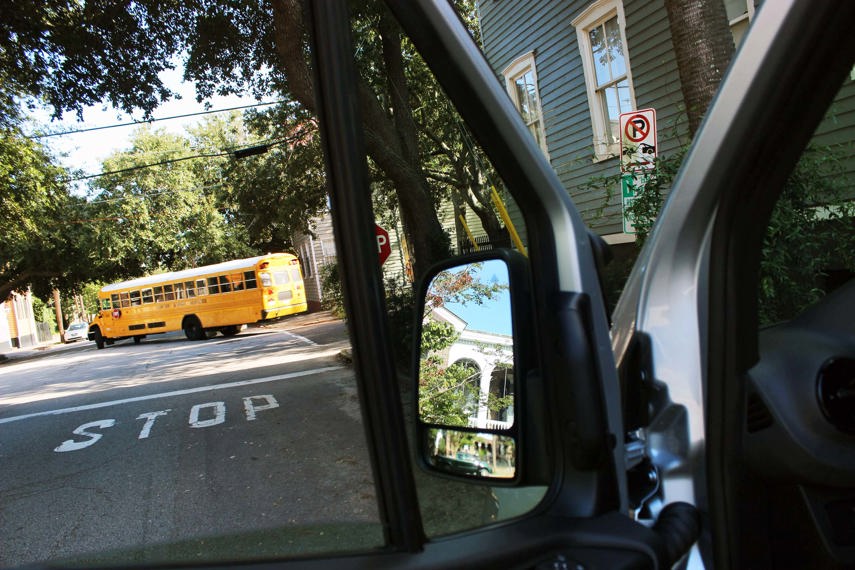
Interestingly, Ontario is the last jurisdiction left in North America that uses a single-colour lighting system on school buses. While all lights on Ontario buses are red, the rest of the continent uses on-board amber lights to alert drivers that the bus is slowing down and red lights while actively stopped and loading or unloading. Bugeya says that this change is being actively lobbied in Ontario, and he’s hopeful that it will help drivers to conduct themselves more appropriately.
“Folks will see people passing a school bus as it’s approaching a stop with the red lights flashing, and there’s some confusion around whether that’s allowed,” he says. “That bleeds into individuals passing the stopped school bus.
“Amber, instinctively, is more of a warning colour. Folks understand that this is a warning phase of the bus. Once the bus stops and the driver activates the stop arm to open the door, those lights are going to switch to red, at which point it’s well understood that means stop completely.
“The amber–red system is much more effective in slowing traffic approaching school buses and reducing the number of vehicles that pass a stopped school bus.”
All of these penalties and deterrents may well be effective in discouraging drivers from passing loading and unloading transit vehicles. But the fact remains that the impetus is on each driver to understand the laws, be alert to their surroundings, and to care enough to do the right thing to protect the well-being of fellow Canadians.
Have a bit of patience and stop when you’re supposed to stop. You may save a few seconds for yourself, but the relative risk of harm, especially to others, is just not worth it.
